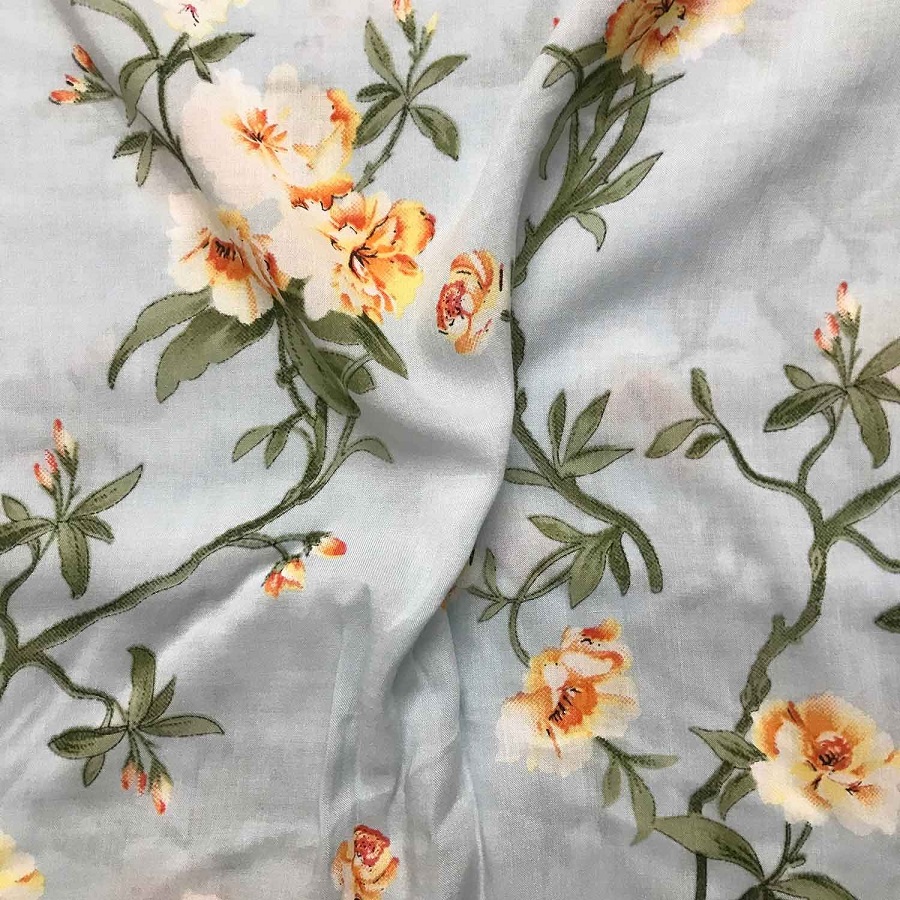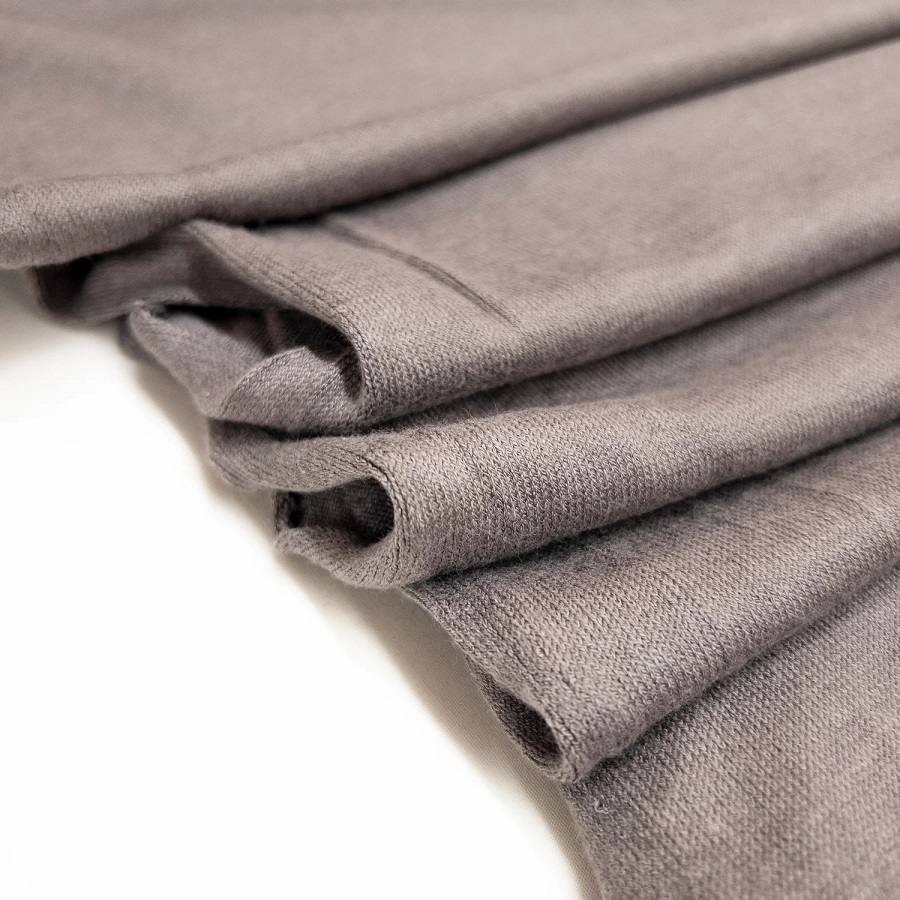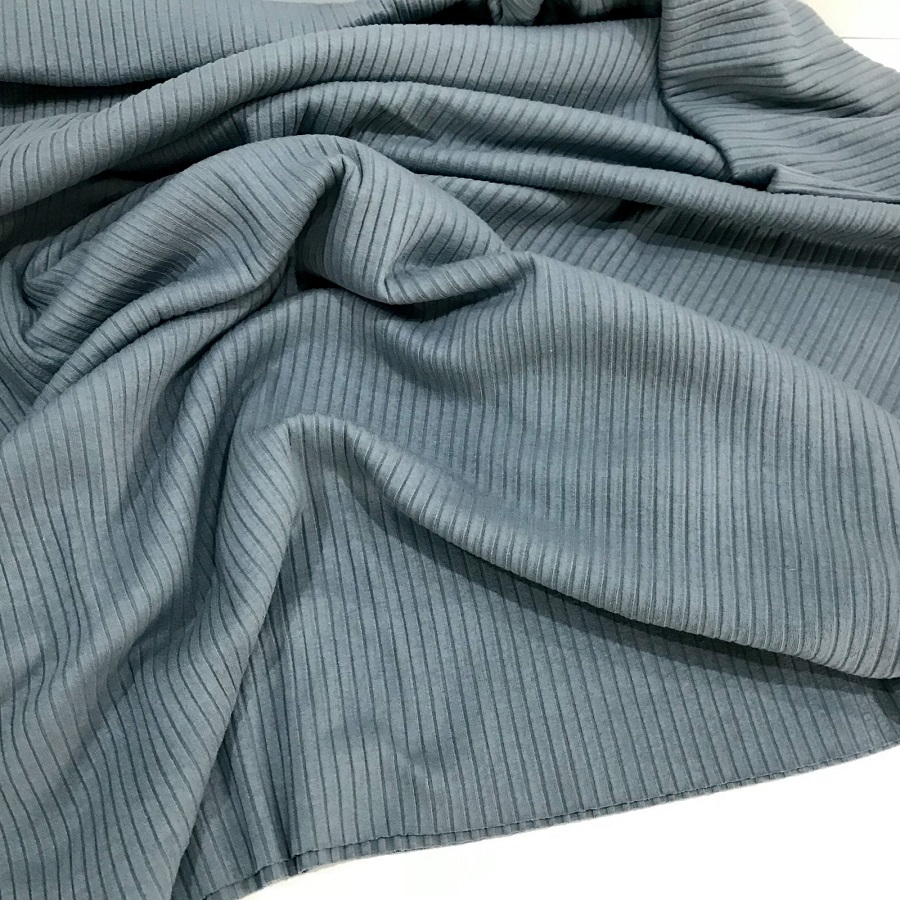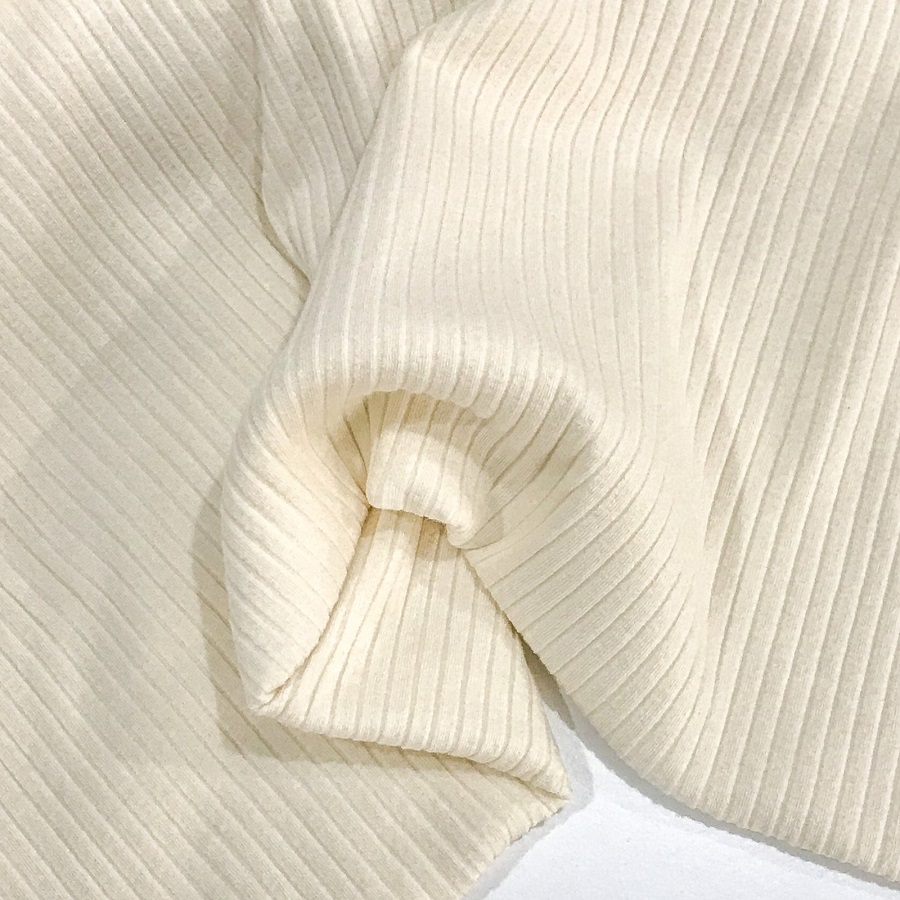Introduction to Cotton Modal Fabric
Cotton modal fabric blends natural cotton with modal fibers. This mix creates a textile known for softness and sustainable qualities. Modal comes from beech trees and is biodegradable. The combination with cotton results in a robust yet soft material. It embraces the benefits of both sources. Cotton adds breathability and strength. Modal offers a silky texture and a slight sheen. Together, they make fabric perfect for clothes and home textiles. Cotton modal fabric suits eco-conscious consumers well. It provides comfort without giving up on environmental responsibility. This fabric is rising in popularity due to its versatility and green footprint. More brands now choose cotton modal fabric for their products. They aim to meet customer demands for sustainable options.

The Eco-Friendly Aspects of Cotton Modal Fabric
When assessing the sustainability of textiles, cotton modal fabric stands out. Its eco-friendly features are crucial for a greener future. Let’s break down these aspects.
Biodegradability
Firstly, modal fibers are biodegradable. They come from beech trees and return to nature after use. This cycle reduces long-term waste and supports eco-system health.
Low Environmental Impact
Modal production has a low impact. It uses less water and land compared to other fibers. Cotton modal blends, therefore, have a smaller ecological footprint.
Energy Efficient Processing
Processing cotton modal fabric consumes less energy. Practices involved are often designed to be more efficient. This contributes to lower carbon emissions.
Use of Renewable Resources
Cotton modal fabric comes from renewable sources. Beech trees for modal grow quickly. They do not need extensive irrigation or harsh chemicals to thrive.
Support for Sustainable Farming
Cotton in the blend can be sourced from sustainable farms. These farms often use organic practices that protect soil health and biodiversity.
The benefits of cotton modal fabric’s eco-friendly nature are clear. It offers a responsible choice for consumers and industries alike. Cotton modal is not just soft and strong. It is also a step towards a more sustainable world.
Benefits and Advantages of Cotton Modal Fabric
Cotton modal fabric offers many benefits and advantages. Its unique blend of natural cotton and modal fibers results in a textile that is both durable and luxuriously soft. Not only is it comfortable against the skin, but it also exhibits excellent breathability. This makes it ideal for a wide range of clothing items, especially those meant to be worn close to the body like undergarments and sleepwear.
The combination of cotton and modal lends the fabric a smooth, silky texture with a slight sheen that is visually appealing. It drapes beautifully, creating a flattering fit for various body types. Moreover, cotton modal fabrics maintains its shape and softness after multiple washes, ensuring longevity and consistent comfort.
In addition to physical attributes, cotton modal fabric is often praised for its color retention properties. Garments made from this fabric tend to hold dye well, resulting in vibrant, fade-resistant colors that stay true over time. This quality is especially appreciated in the fashion industry, where color and pattern play a pivotal role in style and design.
From an environmental standpoint, cotton modal fabric is a preferred option for those looking to make a sustainable choice in their fabric selection. The modal component is derived from renewable beech trees and its production process is designed to minimize water and energy usage. By choosing cotton modal fabrics, consumers are contributing to reduced environmental impact in the fashion industry.
All these attributes contribute to the growing popularity of cotton modal fabric among brands and consumers who prioritize both quality and environmental responsibility. By delivering comfort, durability, and sustainability, cotton modal fabric truly stands out in the textile market.

Cotton Modal Fabric Production Process
Understanding the production process of cotton modal fabric is key to appreciating its sustainability. Each step, from harvesting to finishing, is designed with environmental impact in mind. Here’s how it unfolds:
Harvesting and Extracting Raw Materials
Modal starts with beech tree pulp. Harvesting is done responsibly, often in sustainably managed forests. The cotton is usually picked from eco-friendly farms practicing organic farming.
Turning Pulp into Fiber
The beech pulp undergoes a process to convert it into modal fibers. This step uses high-efficiency technology that conserves energy.
Spinning and Weaving
Once modal fibers are ready, they are spun into yarn. They are then blended with natural cotton fibers. The resulting yarn is woven into fabric.
Dyeing and Finishing
The dyeing process prioritizes the use of safe, non-toxic dyes. Finishing treatments are applied to enhance fabric qualities while being environmentally conscious.
Quality Control
Before being sent out, the fabric undergoes stringent quality checks. This ensures only the best quality eco-friendly cotton modal fabrics reaches the market.
The production process for cotton modal fabric reflects a commitment to sustainability at each stage. By marrying eco-friendly practices with modern technology, the fabric production minimizes its ecological footprint while delivering high-quality material to consumers.
Comparing Cotton Modal Fabric With Other Textiles
When looking at cotton modal fabric, it’s helpful to compare it with other textiles. This gives us better insight into its eco-friendly position in the market.
Versus Traditional Cotton
Traditional cotton is less sustainable than cotton modal blends. It requires more water and pesticides during growth. Cotton modal uses less of these, making it a greener choice.
Versus Synthetic Fabrics
Synthetic fabrics, such as polyester, are not biodegradable. Cotton modal fabric, on the other hand, breaks down naturally. It also uses less energy in production than most synthetics.
Versus Pure Modal
Pure modal is very soft and has a lower environmental impact than many fabrics. However, the addition of cotton enhances durability. This mix extends the life of cotton modal garments without losing the benefits of pure modal.
Versus Organic Cotton
Organic cotton is a sustainable choice, yet cotton modal fabrics edges forward due to its blended nature. Modal adds a silky feel that organic cotton lacks, and the sustainability efforts in modal production contribute to a more eco-friendly product.
In summary, cotton modal fabric stands out for its eco-friendliness and quality. It combines the best of natural and sustainable textiles, providing durable, soft, and eco-responsible material. It serves as a prime example of how blending different fibers can result in a superior textile both in environmental and consumer aspects.
Applications and Uses of Cotton Modal Fabric
Cotton modal fabric’s unique attributes make it highly versatile. It is used in various products, ranging from apparel to household items. Its softness and breathability are perfect for clothing. T-shirts, underwear, and pyjamas often feature this fabric. Its smooth texture lends an air of luxury to bedding. Think soft sheets and comforter covers. Cotton modal is also found in towels. Its absorbent nature makes it ideal for this use.
Apparel
Cotton modal’s comfort and durability shine in clothing. It is ideal for everyday wear, like casual t-shirts and comfortable leggings. Due to its silky touch, many choose it for lingerie and loungewear. The fabric’s ability to maintain color makes it suitable for vibrant, stylish pieces.
Home Textiles
In homes, cotton modal fabrics adds a touch of eco-friendly luxury. It is used for plush bedding, from pillowcases to duvet covers. Its absorbency and softness make it a great material for bath towels and washcloths.
Active and Sportswear
The fabric’s breathability and comfort fit active lifestyles well. Athletes and fitness enthusiasts often wear cotton modal blend clothes. These include workout shirts, yoga pants, and comfortable gym shorts.
Baby Clothes and Products
Cotton modal is gentle enough for a baby’s sensitive skin. Many baby clothing and products, such as onesies and blankets, are made from this material. Its softness and hypoallergenic qualities ensure comfort and safety for infants.
By catering to diverse needs, cotton modal fabric fulfills its potential. It provides users with many practical uses, all while supporting sustainable living. Its multiple applications highlight its superiority among textile choices. Cotton modal fabric is a testament to the balance of luxury, utility, and environmental consciousness.

Care and Maintenance of Cotton Modal Fabric
Caring for cotton modal fabric helps maintain its durability and softness. Below are some key tips on how to effectively look after your cotton modal garments and textiles to keep them in pristine condition.
Washing Guidelines
To preserve your cotton modal items, it’s vital to follow proper washing practices. Use cold water and a gentle cycle to prevent shrinkage and protect the fibers. Opt for a mild detergent and avoid using bleach, as it can damage the modal fibers and cause fading.
Drying Method
After washing, it’s best to air dry cotton modal fabrics. Harsh heat from a dryer can lead to shrinkage and affect the fabric’s feel. If you must use a dryer, choose a low heat setting. Remove the clothes while they’re still slightly damp to retain their softness and reduce wrinkles.
Ironing Cotton Modal
If you need to iron cotton modal, use a warm iron, and avoid high temperatures. Iron on the reverse side to protect the fabric’s sheen. A pressing cloth can also be used to shield the fabric from direct heat.
Storing Properly
Store your cotton modal fabric items by folding them neatly. Do not hang them as they might stretch. Keep the stored items away from direct sunlight to prevent discoloration.
Addressing Stains
Treat any stains promptly to avoid setting in. Gently blot stains instead of rubbing and use a specific stain remover that’s safe for use on modal blends.
Adhering to these care guidelines will extend the life of your cotton modal fabric, ensuring that it remains a sustainable and lasting choice in your wardrobe and home.
Future of Sustainable Fabrics: Role of Cotton Modal
As the fashion industry evolves, the future of sustainable fabrics becomes increasingly important. Cotton modal fabric plays a significant role in this shift towards eco-friendliness. Its blend of natural cotton and eco-credible modal fibers sets it apart as a champion of sustainability. In the future, cotton modal could pave the way for more responsible fabric production and consumption patterns.
Advancing Sustainability in Textiles
Cotton modal fabric demonstrates how innovation can reduce environmental impact. Its production requires fewer resources, such as water and energy, assisting in conservation efforts. As consumers become more eco-aware, the demand for sustainable options like cotton modal is likely to rise. This fabric could inspire other textile advancements that follow similar eco-efficient practices.
Responding to Consumer Demands
Today’s consumers expect sustainable choices. Cotton modal fabrics meets these demands with its eco-friendly attributes. It offers comfort, style, and durability while minimizing harm to the planet. As long as brands and manufacturers continue to innovate, textiles like cotton modal will remain at the forefront of sustainable fashion.
Influence on Industry Standards
Cotton modal’s success could encourage stricter industry standards on sustainability. Recognizing its benefits, the textile industry may move towards more rigorous ecological regulations. This would prioritize the use of renewable resources and efficient production methods, setting higher environmental benchmarks for all fabrics.
The role of cotton modal in the future of sustainable fabrics is pivotal. It’s a template for combining quality with eco-consciousness. It urges producers and consumers to consider not just the immediate appeal of textiles, but their long-term effects on our planet.
